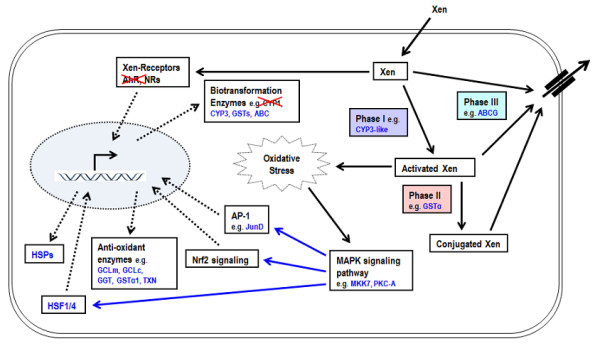Figure 7.

Schematic summary of major elements of cellular defense system that may operate against xenobiotic compounds in Oikopleura. A lipophilic xenobiotic (Xen) compound such as BaP entering the cell may activate xenobiotic receptors AhR or NRs. The activated receptors induce transcription of phase I, phase II and phase III biotransformation genes that metabolize the compound. Phase I biotransformation may create ROS, inducing oxidative stress that can possibly activate other transcription factors (AP-1, Nrf2 and HSF1/4) via MAPK signaling resulting in induction of genes for anti-oxidant enzymes and HSPs. Phase III efflux transporters may pump out the compound and its biotransformation product. Examples of genes that are up-regulated by BaP in Oikopleura are shown in blue color. AhR and CYP1 are crossed out in red to show the absence of the genes in Okopleura genome. Solid black arrows indicate biotransformation such as binding, activation and transport. Dotted black arrows indicate increase in transcript or protein synthesis. Solid blue arrows indicate activation of transcription factors through MAPK signaling. Figure adapted and modified from [2].
